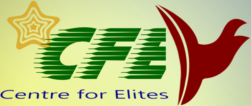There are so many types of curricula. Understanding the different types of curricula is important to understanding the theories and models of curriculum. We shall discuss some of the many types of curricula in this unit.
Classification of types of curricula differs depending on the writer. We will try to learn of the different types which will include overt, explicit or written curriculum; the hidden or covert curriculum; curriculum-in-use; received curriculum; formal and informal curriculum and centralised and decentralised curriculum.
Formal and Informal Curriculum
The informal curriculum is also described as a societal curriculum. Cortes (1981) defines this type of curriculum as the massive, ongoing, informal curriculum of family, peer groups, neighbourhoods, church organisations, occupations, mass media and other socialising forces that “educate” all of us throughout our lives. Examples of such curricula include those being used by the Sabbath Schools, Technical and Vocational Training Centres, and Continuity-Zambia Organisation (C-Z-O) to ensure the provision of values education in Zambia.

Curriculum-in-use: The curriculum-in-use is the actual curriculum that is delivered and presented by each teacher. The formal curriculum (written or overt) comprises those things in textbooks, and content and concepts in the curriculum guides. However, those “formal” elements are frequently not taught.
Overt or Written, Covert or Hidden Curriculum and the Null Curriculum
In many schools there are documents such as texts, films and supportive teaching materials. These are simply those documents which are written as part of formal instruction of schooling experiences. They are overtly chosen to support the intentional instructional agenda of a school. They are known as overt, explicit or written curricula. A good example is the Junior Secondary Education Syllabus by the Curriculum Development Centre (CDC) or simply, The Zambia Education Curriculum Framework 2023 which is currently being implemented in Zambia. Various stakeholders (administrators, teachers etc) were involved in its writing and development.
According to Longstreet and Shane (1993), the “hidden curriculum,” refers to the kinds of learning children derive from the very nature and organizational design of the schools, as well as from the behaviours and attitudes of teachers and administrators. There are several things that learners pick up in schools that are not planned or overt; for example, students learn to be orderly, dress decently, and so on. The hidden curriculum may include both positive and negative messages, depending on the models provided and the perspectives of the learner or the observer.
According to Eisner (1985, 1994), the null curriculum is that which we do not teach, thus giving students the message that these elements are not important in their educational experiences or in our society. From Eisner’s perspective, the null curriculum is simply that which is not taught in schools. In every nation, some people are empowered to make conscious decisions as to what is to be included and what is to be excluded from the overt (written) or prescribed curriculum. This is because it is physically impossible to teach everything in schools. Consequently, many topics and subject areas are intentionally excluded from the written curriculum. This is related to the hidden curriculum since they are not taught. However, the difference is that the hidden curriculum is not intentionally left out of the written curriculum.
Concomitant curriculum – This is the curriculum of what is taught, or emphasised at home, or those experiences that are part of a family’s experiences, or related experiences sanctioned by the family. When this type of curriculum is received at church, in the context of religious expression, lessons on values, ethics or morals, moulded behaviours, or social experiences based on the family’s preferences it relates to the societal curriculum.
The Electronic Curriculum and Phantom Curriculum
Electronic Curriculum: Wilson, (2004) explained this type of curriculum as those lessons learned through searching the internet for information, or through using e-forms of communication. This type of curriculum may be either formal or informal, and inherent lessons may be overt or covert, good or bad, correct or incorrect depending on one’s views.
Phantom curriculum: This is curriculum messages through exposure to any type of media. The content of such curriculum plays a major part in the enculturation of learners into the predominant meta-culture, or acculturating learners into narrower or generational subcultures. You can imagine the lot that African youths learn nowadays through the media. Consider the lessons from ‘Africa Magic,’ ‘Ultimate Search’ and the like. You will recall the impact of these on the lifestyle of many (especially the youths) in Zambia and Africa.
Please visit and subscribe to our YouTube Channel:Decroly Education Centre (youtube.com)orCentre for Elites – YouTube
Discover more from Centre for Elites
Subscribe to get the latest posts sent to your email.
